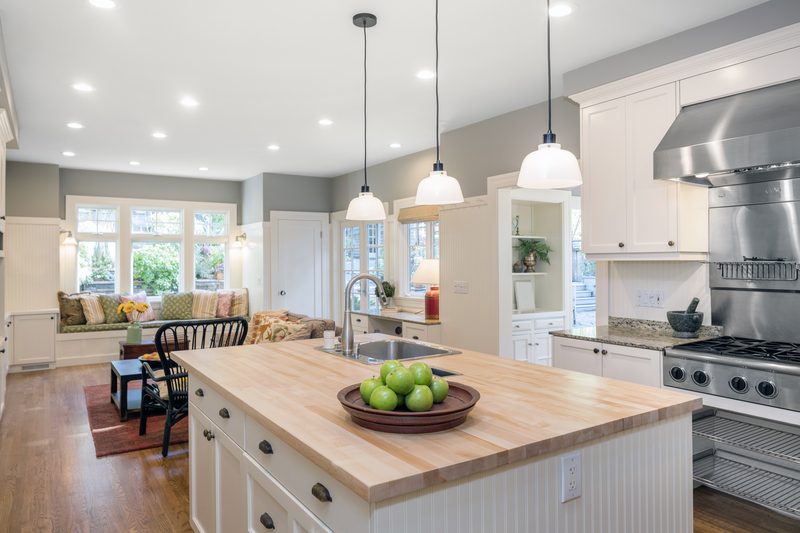Explore the delicate balance in piano moving and why pros are recommended
Posted on 22/05/2025
Explore the Delicate Balance in Piano Moving and Why Pros Are Recommended
Moving a piano is an undertaking that demands precision, experience, and a keen awareness of balance--both literally and figuratively. Whether it's a cherished family upright or a concert-quality grand, these extraordinary instruments require a specialized approach to ensure their safety during transit. Understanding the delicate balance in piano moving is essential for anyone considering a move, and there are compelling reasons why hiring professionals is the gold standard. In this article, we'll offer valuable insights into the intricacies of piano moving, explain the risks, and clearly lay out why enlisting expert help is the safest, smartest decision.

Understanding the Unique Challenges of Piano Moving
Pianos are more than just heavy furniture. They're complex musical machines, crafted with remarkable engineering and artistry. Moving them involves more than brute strength; it's about strategy, skill, and finesse.
Why Are Pianos So Difficult to Move?
- Weight and Size: Pianos often weigh between 300 and 1,200+ pounds. Grand pianos can stretch over seven feet long, and even upright models are unwieldy.
- Fragile Components: Beneath the lid lies a network of delicate strings, hammers, pedals, and pins--all carefully calibrated. A sudden jolt or wrong tilt can wreak havoc.
- Uneven Weight Distribution: Pianos are often heavily weighted on one side, making them prone to tipping or shifting unexpectedly.
- Surface Sensitivity: The wood and finish can scratch or chip with even slight mishandling.
- Valuable and Sentimental: For many, their piano is not just an investment but a family heirloom or centerpiece.
The Delicate Balance: Physics Meets Piano Moving
Achieving delicate balance in piano moving isn't just a turn of phrase. The process requires understanding the physics behind how the piano can be lifted, pivoted, and placed without placing stress on any one part of the instrument--or on the movers themselves.
Key Principles of Safe Piano Transportation
- Center of Gravity: Pianos have a high center of gravity, which shifts depending on the model and orientation. Understanding and managing this is crucial to preventing tipping.
- Balanced Lifting: Multiple people are needed, each placed in strategic positions. Improper balance easily leads to dropped or damaged instruments.
- Specialized Equipment: Dollies, moving straps, skid boards, and custom padding are used to keep weight evenly distributed and allow for smooth movement.
- Gradual Angling: Professional piano movers know when it's safe to tilt a piano and when to keep it upright. For example, grand pianos are usually placed on their sides using a specially designed skid board.
- Floor and Stairs Navigation: Going over slick floors or up/down stairs introduces even more complexity. Each transition point tests the mover's knowledge of equilibrium and control.
Professionals spend years mastering these techniques. Every step--from wrapping to lifting and maneuvering through tight spaces--requires balance and control. Even minor misjudgments can cause costly damage or injuries.
The Risks of DIY Piano Moving
Many well-intentioned individuals believe they can tackle piano moving with a few strong friends and a furniture dolly. However, DIY piano transport poses significant dangers including:
- Personal Injury: Strained backs, crushed fingers, and even more severe injuries are common when moving heavy, awkward loads without proper technique.
- Piano Damage: An upright can be knocked out of tune, internal components misaligned, or keys/pedals broken. Once damaged, repair costs can be high--sometimes exceeding the value of the piano.
- Property Damage: Floors, walls, and staircases can all suffer if the piano slips or tips during a DIY move.
It's not just about muscle; it's about mastering the fine equilibrium required at each stage.
Why Professional Piano Movers Are Recommended
The delicate balance in piano moving is precisely why professionals are worth every penny. Here's what separates the experts from the rest.
Expertise and Experience
Piano movers are trained specialists. They've seen every type of piano in every kind of setting--from spiral staircases to tight elevators and high-rise apartments. This expertise lets them predict and prevent problems before they arise.
Specialized Tools and Techniques
- Piano Skids: Used to anchor and transport grand pianos securely.
- Custom Dollies: Built to support the unique weight distribution of pianos.
- Heavy Duty Straps: For secure lifting and maneuvering through challenging spaces.
- Padded Protection: High-grade blankets and wraps safeguard the finish from scratches and bumps.
Insurance Coverage
Reputable piano movers provide insurance. Should the unexpected happen, your prized instrument (and home) are protected--a crucial advantage, especially for high-value or sentimental instruments.
Efficiency and Peace of Mind
Pros can handle piano moves quickly and safely. This minimizes both the time your piano is in transit and your stress level, letting you focus on getting settled in your new space.
The Steps Professionals Take in Balancing a Piano Move
1. Assessment and Planning
Before any lifting begins, pros evaluate your piano's size, weight, and shape. They survey hallways, doors, stairs, and any tricky turns, devising a step-by-step plan.
2. Preparing the Piano
- Securing keys and pedals: Locks and padding keep movable parts in place.
- Removing legs and lyre (for grands): The piano is gently tipped onto a padded board; legs are carefully detached and wrapped.
- Wrapping and padding: Heavy blankets, shrink wrap, and ties provide layers of protection.
3. The Physical Move: Precision and Balance
With a firm grip and the use of piano skids and dollies, the team works in unison, shifting the instrument with synchrony. As one side rises, others carefully compensate, ensuring no one area bears too much weight. Every motion is calculated.
4. Transport and Reassembly
The piano is loaded onto a truck equipped with ramps, shock absorbers, and locking mechanisms. Upon arrival, the process is reversed with equal care.
5. Final Touches
Once placed in its new location, the instrument is unwrapped, legs reattached, and pedals installed. Most professionals recommend allowing the piano to "rest" before tuning, ensuring it acclimates to its new environment first.
The Real Cost of Cutting Corners
Piano restoration, re-tuning, and repair from a botched move can easily run into the hundreds or thousands of dollars--not to mention the potential cost of medical treatment if someone is injured. The delicate balance demanded in piano moving is a skill honed through practice and investment in tools and training. Attempting to DIY may save you a fee upfront but can cost dearly in the long run.
Choosing the Right Professional Piano Movers
1. Check Credentials
- Look for movers who specialize specifically in pianos, not just general furniture.
- Verify insurance and licensing.
- Ask for references and testimonials from previous jobs.
2. Get a Written Estimate
A reputable company will offer an onsite or virtual assessment before quoting a price. Avoid vague estimates; transparency in pricing is key.
3. Ask About Equipment and Techniques
- What kind of padding, dollies, ramps, and trucks are used?
- How are stairs and narrow spaces handled?
- What's the team's experience with your specific piano type?
When to Schedule Your Piano Move
Timing matters. Extreme temperatures or humidity changes can affect your piano's delicate wood and internal components. Aim to move during more temperate months and allow your instrument to acclimate before use.

Frequently Asked Questions About Piano Moving
Can't any mover handle a piano?
General movers may not have the skills or equipment required. Always hire dedicated piano movers to minimize risks.
Is piano tuning needed after a move?
Usually, yes. The jostling and climate changes can temporarily alter a piano's sound. Wait 2-3 weeks before tuning.
How much does professional piano moving cost?
Prices vary widely--the shape, size, distance, number of stairs, and tricky spaces all factor in. On average, local upright piano moves start around $200-$400, while grands and long-distance moves can exceed $1,000.
Conclusion: Piano Moving Requires Both Art and Science
Exploring the delicate balance in piano moving reveals an art form that blends deep knowledge, careful planning, specialized equipment, and expert touch. For those who cherish their instrument--not just as furniture, but as a living source of music--placing its care in the hands of professionals isn't just recommended, it's essential.
Don't leave your piano's journey to chance. Hire experienced piano movers and protect your investment, your property, and your peace of mind. When it comes to moving these marvels of craftsmanship, expert help ensures your piano will arrive safely--and stay beautifully balanced for generations to come.


